As the sun dips below the horizon, a phenomenon unfolds in the nocturnal realms of the avian world bird migration under the cloak of darkness.
While many associate bird migrations with daylight hours, a significant number of species choose the cover of night to embark on their remarkable journeys. This nocturnal behavior has long puzzled scientists and bird enthusiasts alike.
The question that beckons our curiosity is: Why do birds embark on these nocturnal journeys, forsaking the safety of daylight for the challenges of the night sky? Why do birds migrate at night?
In this exploration, we delve into the fascinating world of night migration, where the air is cool, the stars are guideposts, and the mysteries are as abundant as the wings that navigate them.
Join us on a journey into the shadows, where the instinct to migrate transcends the boundaries of day and night, revealing a captivating tale of adaptation, survival, and the enigmatic allure of the unseen.

Why Do Birds Migrate at Night?
Let’s explore the reasons behind the mysterious choice of birds to migrate at night, delving into the intricacies of their behaviors, adaptations, and the evolutionary marvels that define these nightly flights.
Environmental Advantages
The decision to migrate at night is not arbitrary; rather, it’s a strategic adaptation honed through eons of evolution. One key advantage lies in the environmental conditions offered by the night.
As the sun sets, temperatures drop, and the air becomes cooler. For birds, especially those traveling long distances, the relief from the heat of the day reduces the energy expenditure required for their journey.
Cooler air also provides a more stable and favorable atmosphere for flying, enhancing the efficiency of their flight.
Predation Risk Reduction
Another compelling reason for nocturnal migration is the reduction of predation risks. Daytime predators, ranging from larger birds of prey to opportunistic ground predators, pose significant threats to migrating birds.
By choosing to migrate at night, birds exploit the cover of darkness, making it challenging for diurnal predators to hunt and intercept them.
This adaptive strategy enhances the survival chances of the migrating individuals, allowing them to navigate the skies with a reduced threat of predation.
Celestial Navigation
The night sky serves as a celestial roadmap for migratory birds. These avian navigators have evolved to utilize the stars, moon, and even the Earth’s magnetic field for guidance.
The stars, in particular, become crucial reference points for maintaining a consistent direction during the journey.
Birds are known to possess a specialized area in their brains dedicated to processing celestial cues, allowing them to navigate accurately even in the absence of visual landmarks.
Energy Conservation
Migrating is an energetically demanding endeavor, and birds are keenly attuned to optimizing their energy usage.
Nocturnal migration allows birds to take advantage of the lower air turbulence and reduced wind speeds at night, resulting in less energy expenditure compared to daytime flights.
This energy conservation is critical, especially for species undertaking long-distance migrations, where every bit of saved energy contributes to the success of the journey.
Feeding Opportunities
Daytime migration may clash with feeding opportunities, as many bird species are diurnal foragers.
By choosing to migrate at night, birds can spend their days engaging in essential activities such as feeding and resting, ensuring they are adequately fueled for the upcoming journey.
Nocturnal migration allows them to synchronize their biological rhythms with optimal feeding and resting times.
Cultural Inheritance
The decision to migrate at night is not solely an individual choice but is often a result of cultural inheritance passed down through generations.
Many species exhibit a strong genetic predisposition for nocturnal migration, with young birds inheriting the migratory patterns of their parents.
This cultural transmission ensures the continuity of nocturnal migratory behaviors within specific bird populations, shaping the migratory landscape over time.
What Are the Advantages of Bird Migration?

While the act of migration itself may seem arduous, it offers a myriad of advantages that contribute to the survival and reproductive success of countless bird species.
Here, we delve into the evolutionary benefits of migration, examining how this complex behavior has become an adaptive strategy honed over millennia.
Resource Availability
One of the primary advantages of migration is access to abundant resources across different habitats. As seasons change, so does the availability of food sources. Birds embark on journeys to exploit these fluctuations, ensuring a continuous supply of nourishment.
For example, many bird species breed in temperate regions during the spring and summer when food resources are plentiful.
As winter approaches and these resources dwindle, they migrate to warmer climates where food remains abundant, allowing them to sustain themselves during the colder months.
Breeding Success
Migration is intricately linked to the reproductive success of many bird species. By moving to regions with optimal breeding conditions, birds increase their chances of successfully raising offspring.
The availability of food, suitable nesting sites, and reduced competition for resources in breeding grounds all contribute to higher reproductive success.
The synchronized timing of migration with the breeding season ensures that birds can capitalize on favorable conditions to raise healthier and more robust generations.
Escape from Harsh Conditions
Migration allows birds to escape unfavorable environmental conditions. Harsh winters, limited food availability, or extreme temperatures can pose significant challenges to survival.
By undertaking long journeys to more hospitable regions, birds avoid the perils associated with adverse weather conditions.
This escape from environmental challenges is especially crucial for species that are not well-equipped to endure extreme weather or limited resources during certain times of the year.
Avoidance of Predation
Migration is also a strategic response to predation risks. Many migratory birds face reduced predation threats during their journey, particularly when they migrate at night.
The cover of darkness makes it challenging for diurnal predators to locate and capture them, providing a temporary respite from the constant threat of predation.
This reduction in predation risk enhances the survival chances of migratory individuals, ensuring that they reach their destination with greater success.
Optimization of Energy Expenditure
Energy conservation is a critical advantage of migration. Birds are highly attuned to optimizing their energy usage, and migration allows them to do so by taking advantage of favorable conditions.
Nocturnal migration, for example, minimizes the energy expenditure associated with daytime flight. Additionally, the availability of updrafts and tailwinds during migration helps birds conserve energy during long-distance journeys.
This optimization is crucial for the overall success of the migration, ensuring that birds arrive at their destination with sufficient energy reserves.
Genetic Predisposition and Cultural Inheritance
The advantages of migration are not solely based on individual decision-making but are often ingrained in the genetic makeup of bird populations.
Many species exhibit a strong genetic predisposition for migration, with individuals inheriting migratory patterns from their parents.
This cultural transmission ensures the continuity of migratory behaviors within specific populations, allowing the benefits of migration to persist and evolve over generations.
Which Birds Can Fly the Longest Distance During Migration?
Let’s explore the world of long-distance flight and unveil the champions of the avian realm, shedding light on the incredible journeys that defy geographical boundaries.
Arctic Tern (Sterna paradisaea)
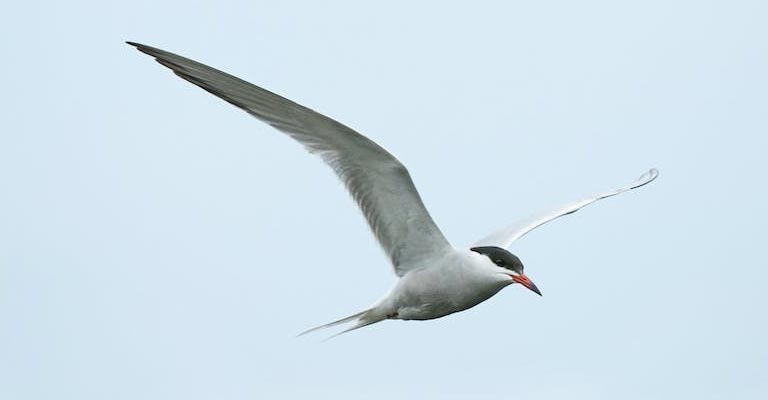
At the forefront of long-distance flight champions is the Arctic Tern, renowned for its awe-inspiring migratory journey.
This small seabird, weighing only a few ounces, undertakes an astonishing round-trip migration of approximately 44,000 kilometers (27,000 miles) annually.
The Arctic Tern nests in the Arctic during the northern hemisphere summer then embarks on a southward migration to its wintering grounds in the Antarctic.
This incredible journey allows the Arctic Tern to experience two summers each year, covering more distance than any other bird on the planet.
Swainson’s Thrush (Catharus ustulatus)
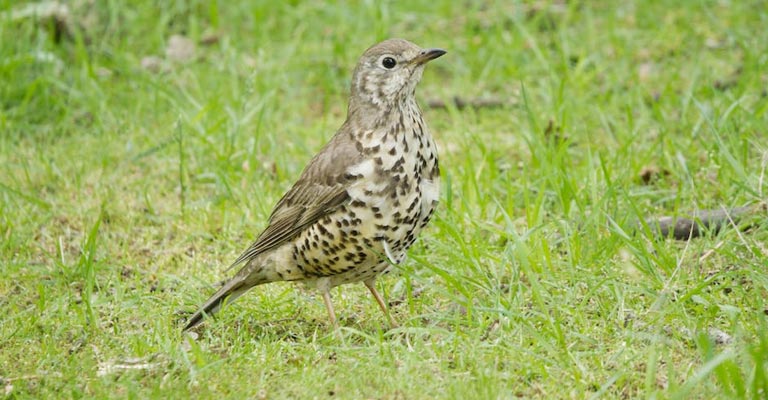
Despite its unassuming appearance, the Swainson’s Thrush is a long-distance flight marvel. This songbird breeds in North America and embarks on an impressive migration to the southern regions of South America.
Covering a distance of over 11,000 kilometers (7,000 miles), the Swainson’s Thrush navigates through diverse landscapes, crossing mountains, deserts, and tropical forests.
The precision and endurance displayed during its migratory journey highlight the remarkable capabilities of this unassuming traveler.
Bar-tailed Godwit (Limosa lapponica)
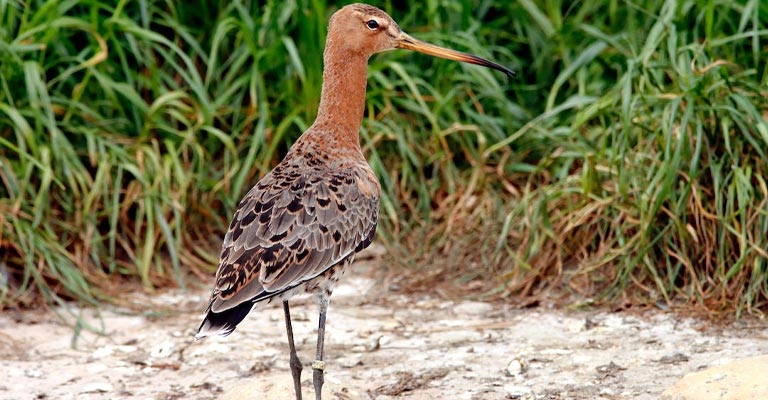
The Bar-tailed Godwit stands out as one of the champions of non-stop flights. This shorebird breeds in the Arctic and undertakes an incredible non-stop journey from Alaska to New Zealand, covering a distance of around 11,000 kilometers (7,000 miles).
What sets the Bar-tailed Godwit apart is its ability to sustain continuous flight for up to nine days without rest, food, or water.
This remarkable feat is made possible by physiological adaptations that enable the bird to optimize its energy usage during the arduous journey.
Common Swift (Apus apus)
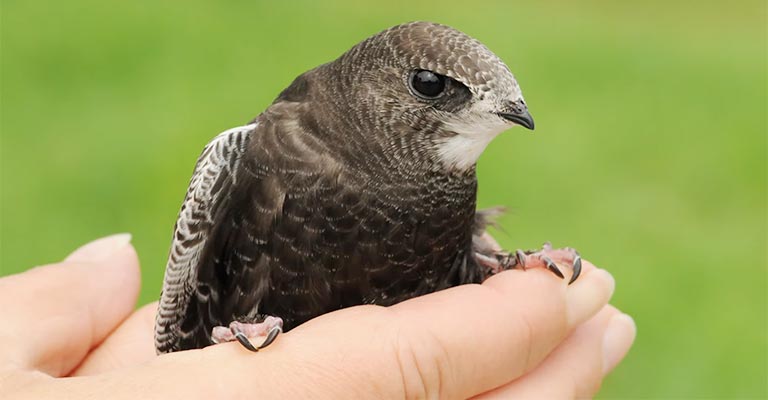
Known for its agile and acrobatic flight, the Common Swift holds the record for the longest continuous flight among birds. During its non-breeding season, this remarkable bird can remain in the air for months at a time.
While not covering the same vast distances as some migratory species, the Common Swift’s ability to stay airborne for extended periods showcases its mastery of flight.
This feat is achieved by feeding, sleeping, and even mating on the wing, a lifestyle uniquely adapted to a life spent predominantly in flight.
Sooty Shearwater (Ardenna grisea)
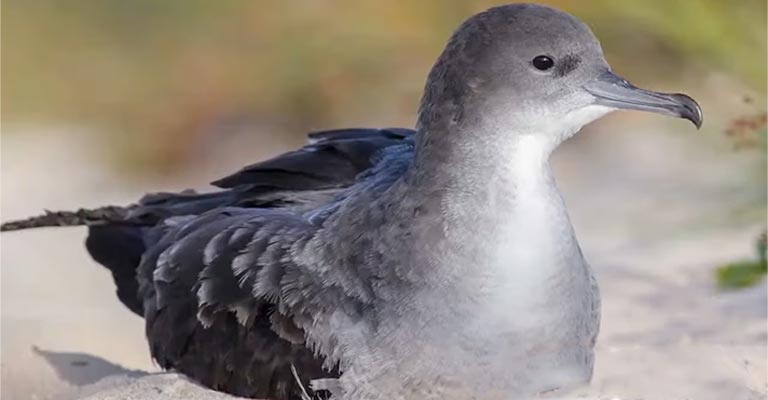
The Sooty Shearwater is a pelagic seabird with an impressive migratory journey that takes it across the Pacific Ocean.
Breeding in the southern hemisphere, these birds embark on a circular migration covering a staggering 64,000 kilometers (40,000 miles) as they travel from their breeding grounds to foraging areas in the North Pacific and back.
The Sooty Shearwater’s ability to traverse immense ocean expanses showcases the adaptability and endurance required for long-distance flight over open water.
FAQs
Why do Arctic Terns migrate such long distances?
Arctic Terns migrate such long distances primarily in search of optimal breeding and feeding conditions. Breeding in the Arctic during the northern hemisphere summer allows them access to abundant food resources.
How do Swainson’s Thrushes navigate during their long-distance migration?
Swainson’s Thrushes navigate during their long-distance migration using a combination of visual landmarks, celestial cues, and the Earth’s magnetic field.
What physiological adaptations allow Bar-tailed Godwits to fly non-stop for extended periods?
Bar-tailed Godwits possess physiological adaptations that enable them to fly non-stop for extended periods. These adaptations include the ability to reduce their body mass through dehydration, altered metabolic rates, and increased efficiency in energy utilization.
How do Common Swifts manage to stay airborne for months at a time?
Common Swifts stay airborne for months at a time by feeding, sleeping, and even mating in flight. Their streamlined bodies and powerful wings are adapted for continuous flight, and they have evolved a lifestyle.
What factors contribute to the Sooty Shearwater’s ability to traverse the Pacific Ocean during migration?
The Sooty Shearwater’s ability to traverse the Pacific Ocean during migration is influenced by several factors. Their efficient and dynamic flight patterns, well-suited for long-distance travel, play a crucial role.
Conclusion
The nocturnal migrations of birds paint a vivid tapestry of resilience and instinctual marvels. As we unravel the reasons behind their choice to soar through the night, we find a testament to the extraordinary adaptations these winged creatures have developed over millennia.
The cover of darkness offers a unique set of advantages, from cooler temperatures to reduced predation risks, allowing birds to navigate vast distances with remarkable precision.
Yet, the mysteries persist and continue to impress us. The intricate dance between celestial cues, environmental factors, and an innate genetic compass remains a captivating enigma.
As we marvel at the unseen spectacle of nocturnal bird migration, we are reminded that even in the realms where shadows reign, the natural world continues to reveal its wonders, inviting us to explore, question, and appreciate the marvels of these nightly journeys across the skies.